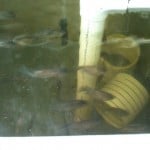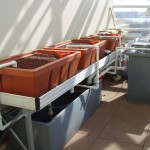I’m live-blogging this week from the US-IALE conference in Anchorage Alaska….. a lot of great discussions going on here!
Brian Czech from the Center for the Advancement of the Steady State Economy gave our plenary talk this morning about sustainable natural resource management and ecological economics. He cautioned us to be mindful of the words we use, particularly development vs. growth. Growth implies that an increasing amount of natural resources will be used over time, and the economy will expand. Development, on the other hand, allows for maintaining natural resource use at current levels, but changing how we use them (e.g., more efficiently and effectively).
Just an hour later, a presenter discussed how the Bureau of Land Management sets and works towards landscape management goals for the Prudhoe Bay area, including “sustainable economic development of natural resources”, however it became clear that BLM is really referring to “sustainable economic growth”. Brian was on-hand to point out the vast policy implications of this terminology choice; a very instructive lesson!




